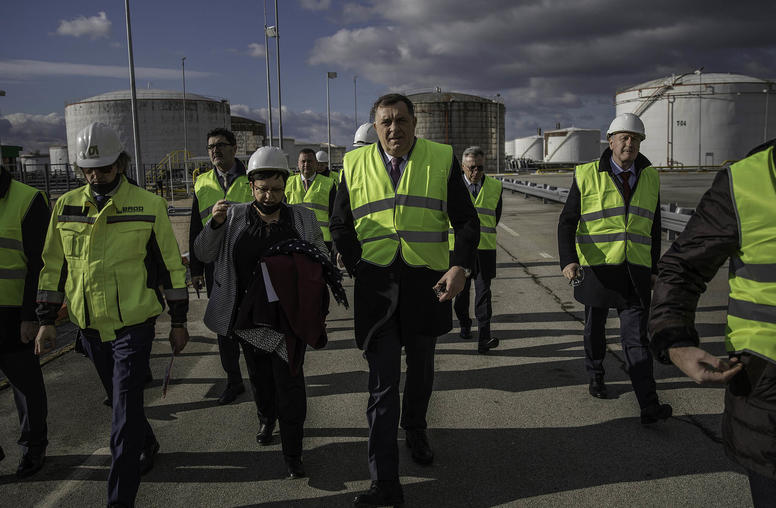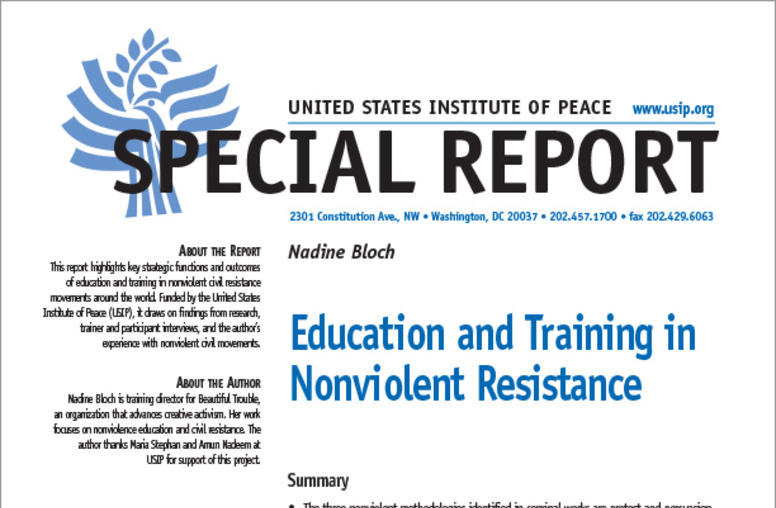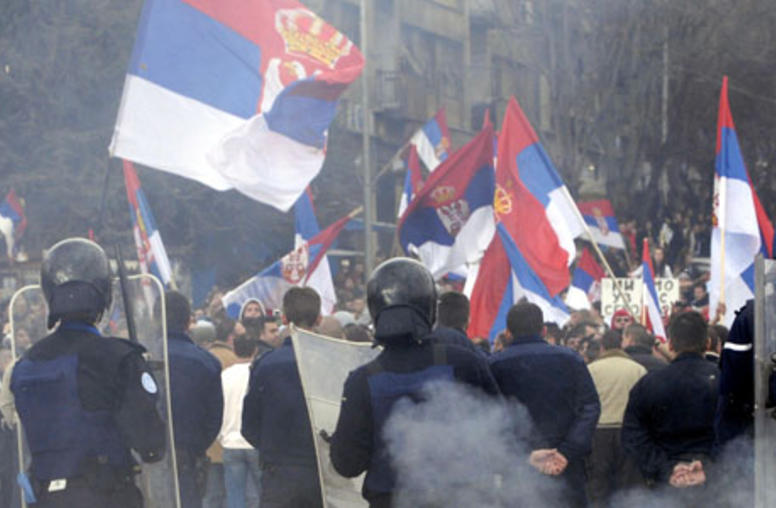Serbia at the Crossroads Again: Can the Country Firmly Embark on the Reform Path with President Boris Tadic?
Serbia still faces many obstacles on the path toward genuine reforms. In this Special Report, Matic again provides an overview of the prospects and problems in carrying out the country's reform agenda. The report was prepared under the direction of Daniel Serwer, director of the Balkans Initiative and the Peace and Stability Operations Program

Summary
- On June 27, 2004, Serbia finally elected a new president after three failed attempts since fall 2002. Boris Tadic of the Democratic Party (DS) has been billed as one who will put the country firmly on the activist reform path and make a decisive break with the legacy of Slobodan Milosevic's rule. As such, Tadic is following the course of former Serbian premier and fellow Democrat Zoran Djindjic, who was assassinated in March 2003.
- The obstacles on the reform path remain formidable: Serbia has yet to reach a national consensus about interpreting and addressing the consequences of its past, and sensitive but crucial issues remain, such as Kosovo and cooperation with the International Criminal Tribunal for the Former Yugoslavia (ICTY), further reform of the country's judiciary and security apparatus, the battle against organized crime and widespread corruption, and the complicated and politically explosive trials of Djindjic's alleged assassins.
- President Tadic's pursuit of the reform agenda is also stymied by the fragmentation of Serbia's center-right coalition government, led by Vojislav Kostunica, and by the Serbian parliament, whose election in December 2003 brought to power parties from the old to the reform-minded left and from the moderate to the radical nationalist right in a precarious balance that is slowing or even reversing reforms—particularly the West's demands for extraditing war criminals to the ICTY.
- Kostunica and his Democratic Party of Serbia (DSS), although part of the "Democratic Bloc" and previously of the Democratic Opposition of Serbia (DOS) that was determined to remove Slobodan Milosevic from power, do not share much of Tadic's and his Democratic Party's reform agenda; the battle over that agenda is an indication of how much of a break the country can make with the Milosevic era.
- For Tadic, a successful cohabitation with Kostunica's coalition government will require not only daily compromises but giving up crucial parts of his agenda of deeper reforms and becoming an accomplice in sustaining the mentality of the past. His Democratic Party may prove to be one of the first victims; both its popularity and unity may suffer.
- Premier Kostunica and DSS will face a very difficult task staying the course and adhering to their core values and constituency while holding together an already fractured coalition and keeping up with the expected pace of President Tadic's reforms. The first crucial challenge to the coalition will be fulfilling Serbia's obligations to the ICTY; the next may be replacing the existing Milosevic-era constitution, which gives only largely symbolic powers to the president.
- The tensions arising from the clash of Tadic's activist reform agenda and the positions of all other parties in the coalition government likely will mean that new arrangements will have to be sought, including new coalitions and, ultimately, new elections for the parliament. December 2003 and June 2004 showed that the electorate in Serbia remains highly volatile, so an early parliamentary election would probably change the scene once again. Serbia's municipal elections, held on September 19 and October 3, may have provided some indication of the trend: voters coalesced around DS and the nationalist Serbian Radical Party, moving away from Kostunica's DSS.
- Kostunica formed the minority democratic government with the support of Milosevic's Socialist Party and on a platform that claimed to represent a break with both Milosevic's regime and the previous DS-led DOS government. A wave of announcements of sweeping "reforms" of the reforms conducted by the former DS regime followed immediately. Some of the "reforms of the reforms" have been less radical than DSS initially advocated because of public backlash, but a new course has been systematically traced and will likely be pursued with determination and vigor over time regarding Kosovo, the economy, education, judicial reform and the campaign against organized crime, and the security apparatus.
- The approach to traditional and modern values heavily influences political orientations. Two-thirds of DS voters embrace modernity, while DSS voters are almost equally divided. Traditionalists prevail among most all other major political parties. Most of those who adhere to traditional values are politically conservative and nationalist; they vote for either Radicals or Socialists and are apprehensive of reforms because they see themselves on the losing side in such a process.
- Although the European Union must remain in the forefront of Balkan transformation, the United States should develop viable strategies for stabilizing the region, focusing on the state union of Serbia and Montenegro and on Kosovo, and take an active leadership role in pursuing that goal.
- The United States should also use actions—not just declarations—of the region's governments and political leaders in breaking with the past and accepting the rule of democratic governance as the benchmark of support. The U.S. should further increase democracy-building assistance, public diplomacy, and the support of programs that enhance direct participation of citizens in Serbia's transition; such assistance and support should be given as much as legally possible in the absence of congressional certification.
About the Report
In early 2002 the U.S. Institute of Peace published Vladimir Matic's Special Report, Serbia Still at the Crossroads. Since then, Serbia's parliamentary elections in December 2003 and the surprising victory of proreform candidate Boris Tadic in the second round of the country's presidential election on June 27, 2004, suggest that Serbia still faces many obstacles on the path toward genuine reforms. In this Special Report, Matic again provides an overview of the prospects and problems in carrying out the country's reform agenda. The report was prepared under the direction of Daniel Serwer, director of the Balkans Initiative and the Peace and Stability Operations Program.
Vladimir Matic is a lecturer at Clemson University, where he has been teaching international relations since 1996. He has served as a consultant to the United States Institute of Peace since 2001. In 1999, he was a Public Policy Scholar at the Woodrow Wilson International Center for Scholars in Washington, D.C. He has published widely on European and Balkan affairs and has been a consultant to a variety of governmental and nongovernmental organizations. He is a former senior Yugoslav career diplomat and a former assistant federal minister for foreign affairs, a post he resigned in 1993.



